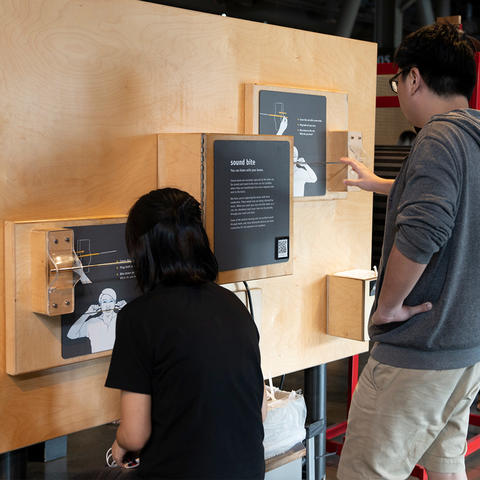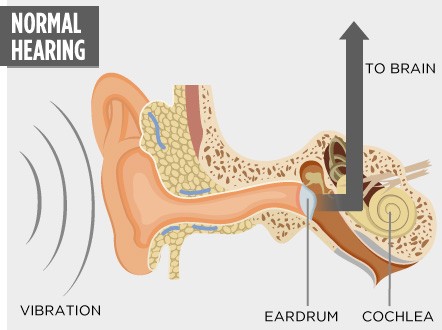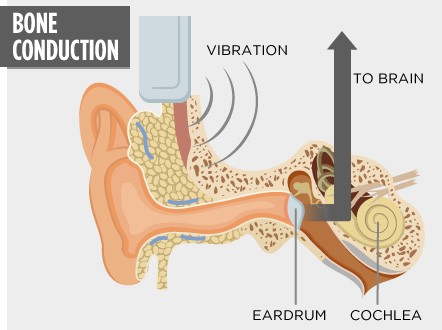
Sound Bite
Sound Bite is a music player with a metal rod as opposed to a speaker system. Within the exhibit, music is played that is too quiet to hear, but by chewing on a metal rod (via a disposable straw), the sound is delivered directly into your ears.
Components:
- Radio with metal rod
- Earplugs
- Straw
Working Principle:
Sound must travel through a medium such as air, water, or a solid to reach its destination. When sounds travel through the air, we normally hear them. The vibrations of the bones in our inner ear are caused by sound waves travelling into our ears. These vibrations transmit information to our brain, which we perceive as sounds. When you bite down on the metal rod with Sound Bite, music is played through your teeth. This works because the rod has a speaker attached to it that is playing music. When you bite the rod, sound waves travel through the rod, your teeth, and your skull to your ear bones.
Have you ever noticed how you sound strange on recordings? This is because you can hear your own voice through your bones as well as your ears. Since this is the case, your voice sounds deeper for you than it does for everyone else.
When German musician Ludwig van Beethoven began to lose his hearing in the late eighteenth century, he tried listening to his piano by clutching a wooden stick in his teeth in contact with the piano.

Joggers can now purchase bone-conduction headphones that transmit sound via the cheek bones.
Bone Conduction
The eardrums are bypassed via Bone Conduction. The bone conduction equipment (such as headphones) take the place of your eardrums in bone conduction listening. The eardrum is never engaged since these gadgets decode sound waves and turn them into vibrations that may be received directly by the Cochlea. Vibrations in the bones (or skull) and skin carry the “sound” to the ears.

Eardrum injury is the most common cause of hearing loss. People with hearing impairments would be able to hear clearly again with bone conduction because it does not involve the eardrums. This is provided that their cochlea is healthy and normal.
Bone conduction hearing devices assist patients who have difficulty hearing.

Google Glass, for example, harnesses the bone conduction pathway to eliminate the need for earbuds.

Instructions:
- Turn on the radio
- Put earplugs in your ears (optional) and adjust the volume of the radio low enough so that you can no longer hear it.
- Clasp the metal rod using a thin straw between your front teeth. You should be able to hear the radio again but through your bones instead of the air
- Why can’t you hear the sound when you aren’t biting the rod?
Links:
Stanford scientist looks for a deeper understanding of hearing through the bones in our heads
Voices in Your Head: How Google Glass Lets a Half-Deaf Person Hear
https://www.scienceandmediamuseum.org.uk/sites/default/files/2017-03/Sound Bite.pdf